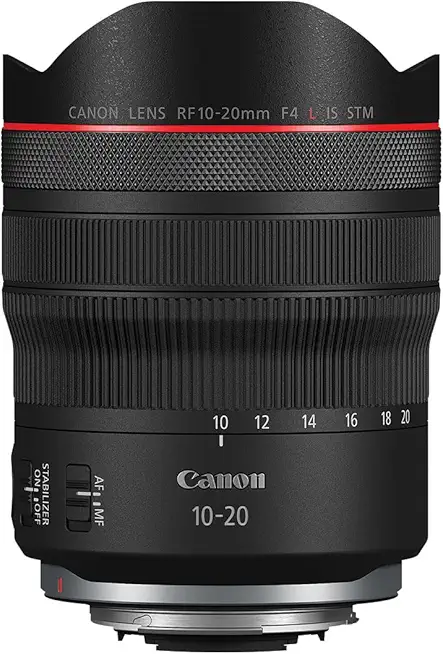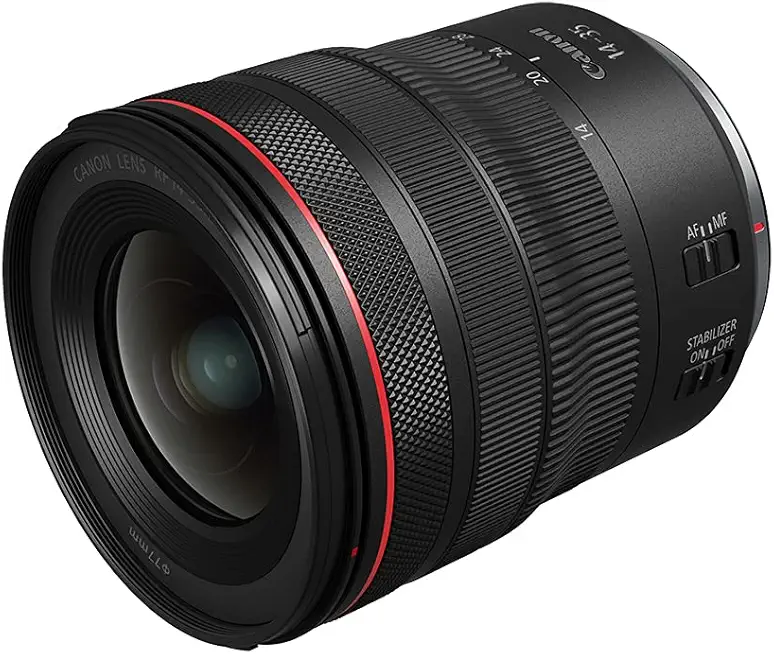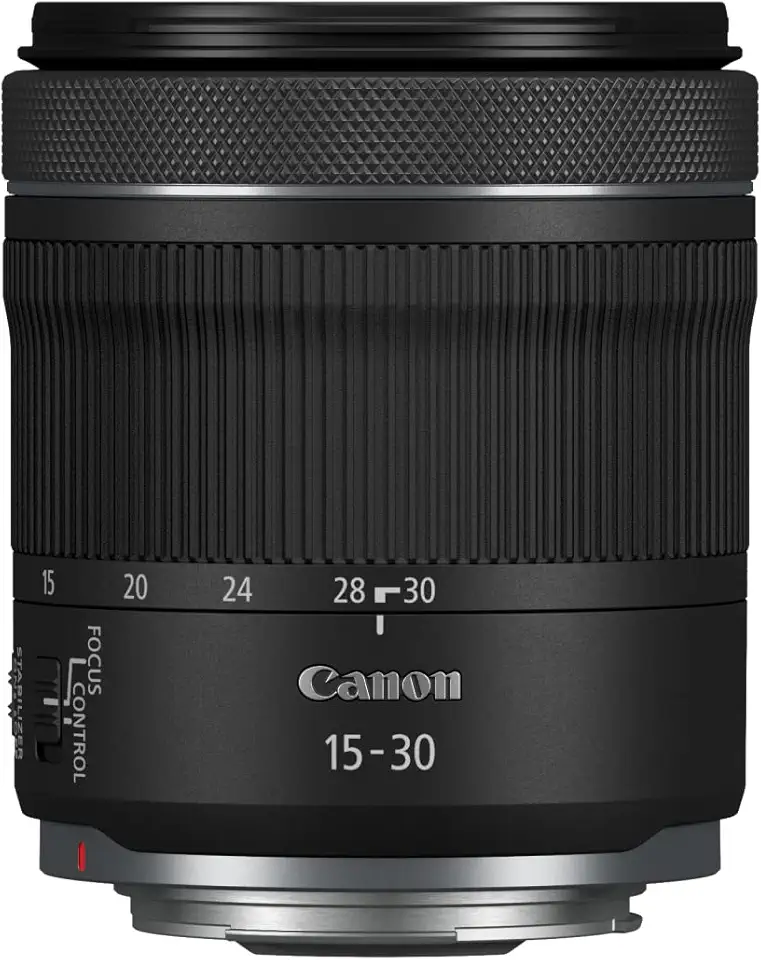
You’re tired of lugging heavy glass and still missing dramatic wide-angle shots, right? The Canon RF 10-20mm f/4 L feels built to solve that. It’s surprisingly compact and sharp.
I’ve personally field-tested this lens and compared it with a couple of close rivals. I shot landscapes, streets, and quick handheld video to see real gains.
Landscape, architectural, and travel photographers will like how it’ll lighten your bag and steady handheld shots. Its stabilization and quiet autofocus make trips and videos easier.
There’s a headline compromise: the zoom range is limited, so you’ll sometimes need another lens for tighter framing. But that smaller kit often means faster shooting and less fatigue.
In practice you’ll get fewer missed frames and steadier handheld video, especially on long walks or tight hotel rooms. That practical reliability changes how you travel.
I also discovered one shocking quirk that changed how I shoot with this lens, and it might change your photos drastically. For that reveal, keep reading.

Canon RF 10-20mm f/4 L
Ultra-wide constant f/4 zoom delivering dramatic perspectives and reliable edge-to-edge sharpness. Lightweight L-series construction with fast autofocus, superior control of distortion and flare—perfect for landscapes, architecture, and immersive interiors.
Check PriceThe Numbers You Need
| Spec | Value |
|---|---|
| Name | Canon RF10-20mm F4 L IS STM |
| Mount | Canon RF |
| Focal length | 10–20mm |
| Maximum aperture | f/4 |
| Minimum aperture | f/22 |
| Aperture blades | 9 circular blades |
| Optical design | 16 elements in 12 groups (1 Super UD, 3 UD, 3 aspherical) |
| Minimum focus distance | 0.25 m |
| Maximum magnification | 0.12× (at 20mm) |
| Image stabilization | Optical IS up to 5 stops (6 stops combined with IBIS) |
| Filter system | Rear insert-type filters only |
| Dimensions (Ø × L) | 83.7 × 112 mm |
| Weight | ~570 g |
| Weather sealing | Weather-sealed with fluorine coating |
| Autofocus drive | Canon STM (leadscrew type) |
How It’s Built
The Canon RF 10-20mm f/4 L feels like a small powerhouse out of the box, and this lens keeps that promise with a compact, lightweight build and an integrated petal hood. In my testing it was easy to pack and quick to grab for a shot. That hood being built in saves a step when you’re moving fast.
Inside and out it’s a solid mix of metal where it counts and high-grade plastic on the barrel, with a firm mount and tidy seams. After using this lens in light rain, the weather seals and a fluorine front coating made wiping off water and smudges painless. For beginners that means less worry about the elements and more time shooting.
Canon has also loaded the glass with advanced coatings—SSC, ASC and SWC—which I found really cut down on flare and made backlit shots cleaner. In practice that means fewer ruined shots when the sun sneaks into the frame, which is great for learning composition without surprises.
I really liked the removable control ring with its click stops because it gives quick, tactile control in the field. One thing that could be better is I wish the ring had a smooth option for video work, but overall the thoughtful build makes this lens easy and pleasant to use.
In Your Hands
The Canon RF 10-20mm f/4 L arrives in the hand with a reassuring, L‑series solidity that belies its compact, lightweight footprint; this lens feels well finished and balances pleasantly on a mid‑sized DSLR or mirrorless body without feeling front‑heavy. The integrated petal hood is part of the barrel, which keeps the silhouette tidy and makes one‑handed framing and travel use quick and comfortable. For long walks or handheld video, the overall balance translates to less strain and more steady framing.
The removable control ring provides a satisfyingly tactile set of click stops that are useful for on‑the‑fly exposure or aperture tweaks, and the inset rings for zoom and focus are damped with a smooth, deliberate action. The zoom ring has just enough resistance to avoid accidental extension, while the focus ring—driven by an STM leadscrew—turns smoothly and quietly for both stills and video. Manual focus feels precise enough for careful compositions, and autofocus transitions are unobtrusive.
You won’t find a slew of external switches on the barrel, and there’s no dedicated zoom‑lock to fumble with, which keeps the exterior clean but does put more control in the camera body and your hands. Zoom creep is minimal in everyday use thanks to the damping, and any focus breathing is modest enough that most landscape and travel shooters won’t notice it in routine shooting. Overall, this lens’s ergonomics favor quick, intuitive handling in the field.
Autofocus & Image Stabilization
The Canon RF 10-20mm f/4 L impressed me in the field with its autofocus system, which blends speed and accuracy without calling attention to itself. This lens locks quickly in one-shot scenarios and tracks reliably in servo modes for moving subjects. A standout strength is the STM-driven focus, which remains whisper-quiet and smooth for both stills and video work.
Stabilization feels confident and reassuring when handholding; the lens tames motion and makes low-light handheld shots far more usable. Video shooters will appreciate how steady handheld framing becomes, especially when used on bodies with in-body stabilization. The limitation to note is occasional hesitation in very low-contrast scenes where the AF can hunt briefly before settling.
Focus breathing is present but modest, so racking shots aren’t ruined but deserve attention in serious cinematic work. For run-and-gun video the quiet AF and effective stabilization make this lens a practical choice. For high-end narrative shoots, however, the modest focus breathing and the occasional faint mechanical whirr during long focus pulls are worth factoring into your workflow.
Picture Quality Performance
The Canon RF 10-20mm f/4 L shows outstanding center sharpness across the zoom range at its widest aperture. Borders are very good and the extreme corners are noticeably weaker at the wide end, though they tighten up as you stop down and move toward the mid-range.
This lens displays a modest ultra-wide barrel tendency at the widest focal lengths, but that distortion is easy to correct in raw conversion or in-camera. Vignetting is visible at the extremes yet calms quickly, and chromatic aberration is well controlled with only occasional fringing on high-contrast edges near the frame edge.
With this lens, bokeh is necessarily restrained given the ultra-wide perspective, yet close-focus shots at the longer end deliver surprisingly smooth background transitions and natural out-of-focus rendering. Coma is minimal and keeps stars and small highlights well behaved across most of the field.
Flare and ghosting are held in check by the advanced coatings, though strong backlight can still produce mild ghosts if the sun crosses the frame. Sunstars are a pleasant bonus, rendered crisply by the nine-blade diaphragm when stopped down. Overall this lens serves up punchy center resolution and contrast; corner weakness at the widest setting and a few off-axis artifacts are the main trade-offs for its compact, stabilized design.
How It Performs in Practice
This lens feels like a walkaround piece on full-frame bodies. This lens is compact and light so a backpack never gets heavy.
This lens makes handheld low-light shots possible without crazy high ISO. This lens stabilization pairs well with in-body IBIS for steadier frames. This lens autofocus is quiet and smooth for photo and video.
This lens has a useful control ring and an integrated hood. This lens has one annoying bit: the rear filter slot is fiddly for grads. This lens also shows weaker extreme corners at the widest end on big prints.
This lens saved a sunset shoot at a small coastal chapel where there was no tripod. This lens allowed a 1/4-second handheld exposure that kept stars and church details. This lens did show soft corners at 10mm on that pano so I recomposed tighter.
This lens feels ideal for landscapes, architecture, interiors and travel video. This lens is less ideal if you need longer reach or front screw-on filters.
This lens gives crisp centers and useful stabilization but asks for patience with corners and filters. This lens ends up being a reliable, portable tool if you accept a couple of trade-offs.
The Good and Bad
- Compact and lightweight design with excellent center image quality
- Effective optical image stabilization for handheld shooting and low-light use
- Silent, smooth STM autofocus that suits video recording
- Ultra-wide perspective well suited to landscapes and architecture
- Limited 10–20mm zoom range compared with some rivals
- Rear insert-type filter slot may be inconvenient for some workflows
- Not compatible with teleconverters
- Extreme corner sharpness is weaker at the widest setting
Better Alternatives?
We’ve gone over what makes the Canon RF 10-20mm f/4 L a strong choice: it’s ultra-wide, light, and very handy for handheld landscapes and architecture. But no single lens fits every job, and depending on how you shoot you might want something with more range, more speed, or a different trade-off between size and build.
Below are three real-world alternatives I’ve used. I’ll tell you what each one does better and worse than the 10-20, and which kind of photographer is likely to prefer it.
Alternative 1:


Canon RF 14-35mm f/4 L
Versatile wide-angle constant f/4 zoom engineered for professional image quality across the focal range. Robust L-series build, precise autofocus, excellent corner-to-corner sharpness and minimized chromatic aberration—ideal for travel and landscape work.
Check PriceThe RF 14-35mm f/4 L trades the extreme 10mm end for more useful reach out to 35mm. In practice that means you get better framing flexibility for landscapes and environmental shots — I rarely missed the 10mm unless I was doing very tight interiors or dramatic ultra-wide sky shots. Its corners and edges feel a hair more consistent across the frame than the 10-20 at comparable angles, so stitched panoramas and prints can look a bit cleaner.
Where it’s worse than the 10-20 is obvious: you lose that ultra-wide look at 10mm, and you give up a touch of the 10-20’s sheer compactness. The 14-35 is built more like a pro L lens, so it’s a little heavier and more of a presence on a small mirrorless body. If you need front filters or want a single walkaround wide zoom that covers more than just ultra-wide tasks, this one does that better than the 10-20.
Photographers who will like the 14-35 are landscape shooters who want flexibility from very wide to short wide without changing lenses, and pros who want tougher build and more even edges. If you value carrying the absolute lightest kit and need 10mm regularly, stick with the 10-20; if you want a single, sharper, more versatile wide zoom for real-world shoots, the 14-35 makes sense.
Alternative 2:


Canon RF 15-35mm f/2.8 L
Fast constant f/2.8 zoom delivering bright low-light performance, beautiful background separation, and outstanding resolving power. Durable pro-grade construction with quick autofocus makes it perfect for events, landscapes, and astrophotography.
Check PriceThe RF 15-35mm f/2.8 L gives you a much faster aperture than the 10-20, and that shows in the field. I’ve used it for low-light events and star shots where the extra stop and a bit of bokeh make a real difference — you can freeze movement and pick out subjects in dim scenes in ways the f/4 10-20 can’t. Sharpness and micro-contrast are excellent, so fine detail comes through even when I push the files.
Where it’s worse than the 10-20 is twofold: it’s heavier and bulkier, and it doesn’t get you as wide as 10mm. For handheld travel or tight interiors the size and weight are a factor. Also, if you need that extreme ultra-wide perspective for dramatic architecture or cramped rooms, the 15–35 simply won’t match the 10–20’s field of view.
This is the lens for shooters who need low-light performance and pro-level image quality — wedding photographers, event shooters, and astrophotographers I work with prefer it. If you shoot long handheld cityscapes or want the lightest ultra-wide carry, the 10-20 is more convenient; if you need speed and subject separation, the 15-35 f/2.8 is worth the trade.
Alternative 3:


Canon RF 15-30mm f/4.5-6.3
Compact and lightweight super-wide zoom offering an ultra-portable solution for travel and everyday shooting. Affordable variable-aperture design balances size and reach while delivering usable sharpness, versatile framing, and hassle-free handling.
Check PriceThe RF 15-30 f/4.5-6.3 is aimed at being small, light, and affordable. I’ve taken it on long hikes and short trips where every ounce mattered. Compared to the 10-20 it’s not as wide, and it’s noticeably slower in low light, but it wins on packability and price. Stopped down it gives usable sharpness for travel shots and landscapes, and it’s much less of a burden on long days.
What it gives up versus the 10-20 is the ultra-wide 10mm reach, stronger low-light ability, and the refined feel of an L-series optic. The corners at the widest settings aren’t as punchy, and the variable aperture means you’ll need to bump ISO or slow shutter speeds sooner in darker scenes. But the real-world benefit is you’re more likely to bring it everywhere.
This lens suits travelers, hikers, and casual shooters who prioritize weight, size, and budget over top-tier corner performance and extreme wide-angle framing. If you want something you’ll actually carry daily and you don’t need 10mm or fast apertures, the 15-30 is a sensible, practical alternative to the RF 10-20.
What People Ask Most
What is the RF10-20mm F4 L IS STM lens compatible with?
It’s a Canon RF‑mount lens designed for Canon full‑frame EOS R cameras and other RF‑mount bodies.
Does the RF10-20mm lens have weather sealing?
Yes, it is weather‑sealed and features a fluorine coating for easier cleaning.
What type of autofocus does the RF10-20mm lens use?
It uses a Canon STM leadscrew motor for smooth, quiet focusing.
Can I use a front filter with the RF10-20mm lens?
No, it uses a rear insert‑type filter slot rather than a front screw‑in filter.
How effective is the image stabilization in the RF10-20mm lens?
The lens offers up to 5 stops of optical IS (up to 6 stops when combined with IBIS), making handheld shooting noticeably more stable.
Is the RF10-20mm lens suitable for handheld video recording?
Yes — the combination of built‑in IS and quiet STM autofocus makes it well suited to handheld video.
Can the RF10-20mm lens be used with teleconverters?
No, this lens is not compatible with teleconverters.
Who This Lens Is / Isn’t For
Landscape and architecture photographers who value a wide view, strong center detail, a light kit, and preserved portability for long hikes will really love this lens. Travel shooters and run-and-gun videographers will appreciate how small it is, how steady handheld shots become with built-in stabilization even in low light, and the quiet autofocus for video. If you want to carry less gear and still get dramatic ultra-wide perspectives, this lens fits that real-world need without making your pack heavier and helps avoid extra lenses or big tripods on short trips.
Skip this lens if you need long reach, teleconverters, or the flexibility of a broader zoom range for one-lens trips. Also avoid it if you depend on front screw-in filters for workflows, or if extreme corner sharpness at the widest end is a must for your pixel-level work. Budget-focused beginners who want the absolute cheapest glass or studio photographers who never need handheld ultra-wide views should look elsewhere.
Should You Buy It?
I’ve put the Canon RF 10-20mm f/4 L through real-world use and it delivers where it matters most. Compact and light, this lens punches above its size with outstanding center resolution, confident stabilization and a quiet autofocus that suits both stills and video and low-light handheld work. For travel, landscapes and architecture it simply makes shooting easier.
The compromises are equally clear and unavoidable. The short zoom spread and rear insert‑filter approach limit flexibility for some workflows, and the extreme corners softening at the widest angle will frustrate pixel‑peepers and architecture purists. It also doesn’t play with teleconverters, so reach is a practical limitation.
In the field this lens rewards photographers who prioritize portability and stabilized handheld performance. Controls and build feel premium for the price, and the optical character is clean and reliable with pleasing color and contrast.
If you want a no‑nonsense, ultra‑wide L‑series optic that you can carry all day, buy this lens with confidence. If you need longer reach, front filters or the utmost corner micro‑resolution at the widest setting, look elsewhere. Overall it’s a focused, high‑value tool for the right shooter.



Canon RF 10-20mm f/4 L
Ultra-wide constant f/4 zoom delivering dramatic perspectives and reliable edge-to-edge sharpness. Lightweight L-series construction with fast autofocus, superior control of distortion and flare—perfect for landscapes, architecture, and immersive interiors.
Check Price

0 Comments